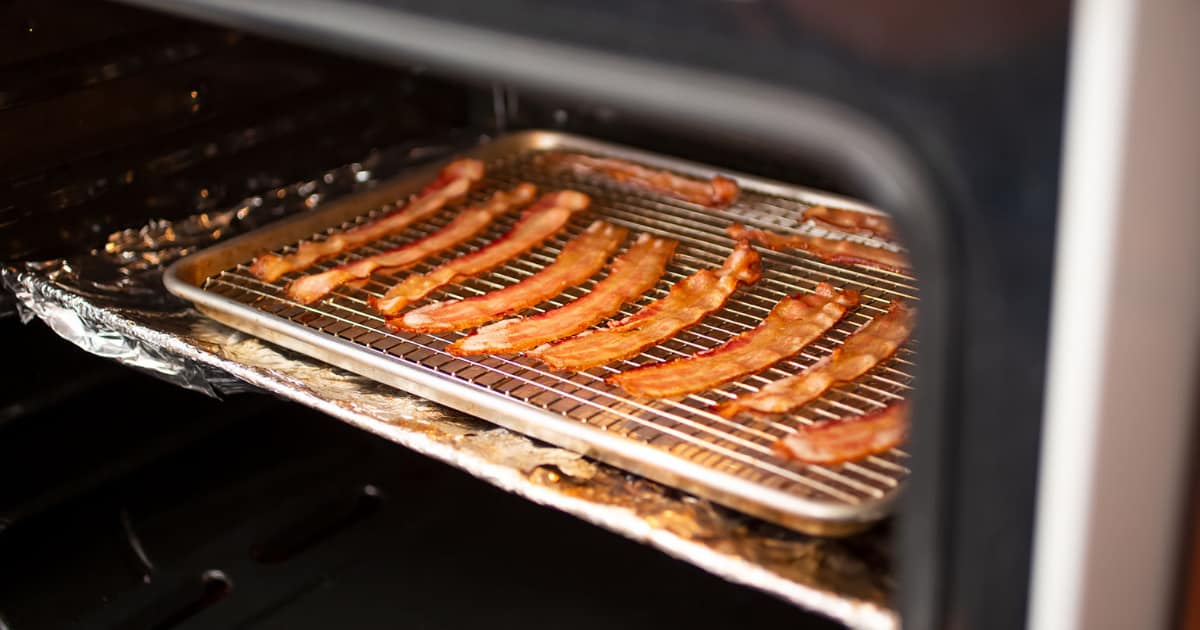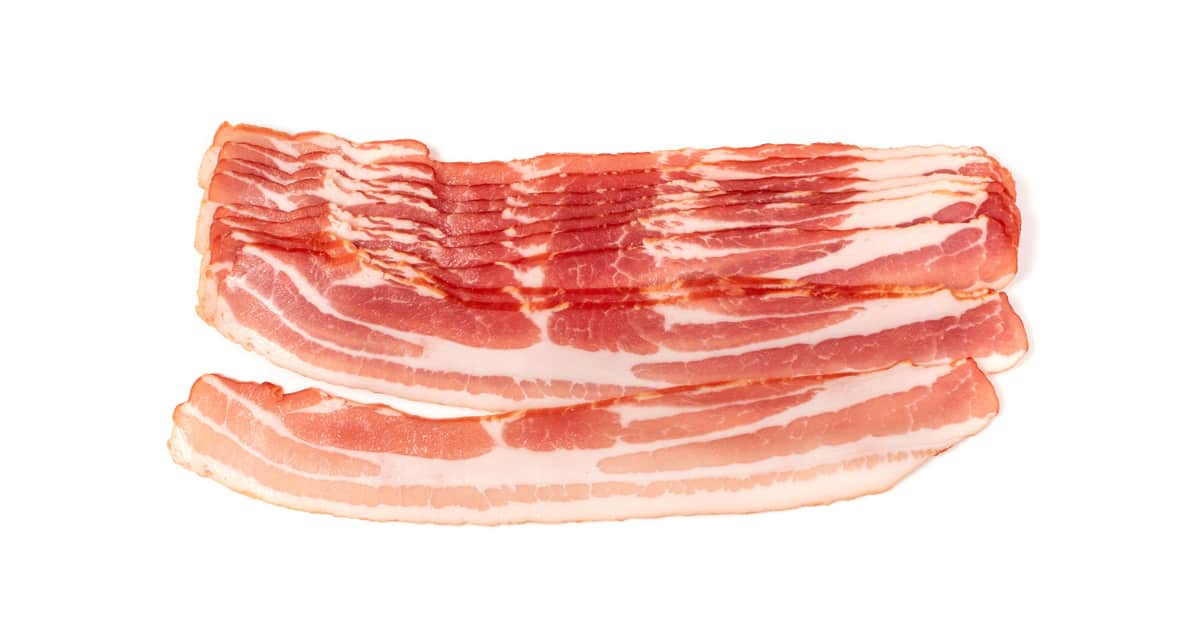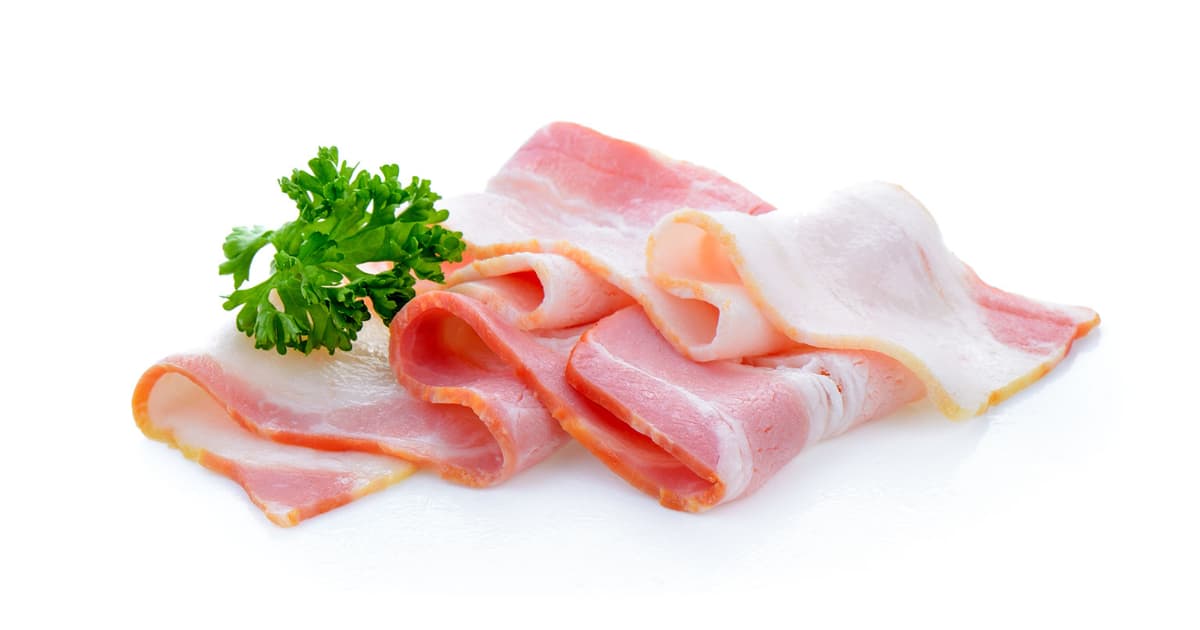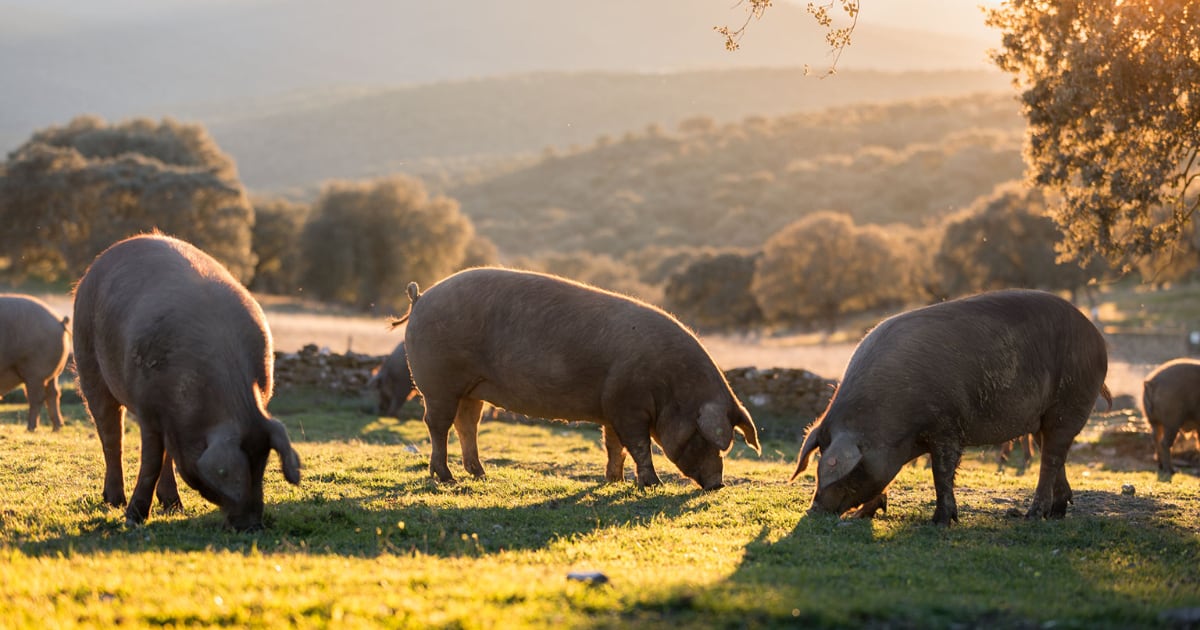Learn how to cook bacon in the oven, which is an ideal way to get perfectly crisp bacon without all the effort or mess of cooking on a stovetop.

Once you know how it's straightforward!
Equipment and Tools Needed
Several tools and equipment are needed when preparing bacon in the oven. Some are essential, while others provide easier handling and increase the flavor quality.
Essential Tools
Getting the perfect oven-baked bacon is heavily reliant on having the right tools.
You can set yourself up for bacon-cooking success by understanding the significance and function of each tool.
Rimmed baking sheet
A rimmed baking sheet is essential for baking bacon because it provides a stable surface and collects any rendered fat.
This eliminates spills and makes the cooking process less messy.
Use a sturdy, heavy-duty baking sheet to withstand high oven temperatures and distribute heat evenly.
Oven-safe rack
An oven-safe rack is a must-have tool for crispy, evenly cooked bacon.
Hot air can circulate the bacon slices on the rack, allowing the fat to drip away during cooking.
As a result, it is less greasy and perfectly crispy.
Ensure your rack is made of a heat-resistant material, such as stainless steel, and fits snugly inside your baking sheet.
Aluminum foil or parchment paper
Line your baking sheet with aluminum foil or parchment paper for easy cleanup.
Both materials help to keep the bacon from sticking to the baking sheet and make it easy to remove the rendered fat.
Aluminum foil is handy for evenly distributing heat, and parchment paper provides a nonstick surface.
Optional Tools
While the necessary tools are required for oven-baking bacon, there are also optional tools that can improve your cooking experience and the result.
Each item provides advantages that can improve the efficiency and enjoyment of your bacon-cooking process.
Silicone baking mat
A silicone baking mat is a reusable alternative to aluminum foil or parchment paper.
These nonstick mats are oven-safe and can go directly on your baking sheet.
They provide an easy-release surface for your bacon, making cleaning easyand reducing waste.
Tongs or a fork
A sturdy pair of tongs or a fork is essential for safety and ease when handling hot slices.
These tools allow you to flip and transfer the bacon without risking burns or messes.
Use heat-resistant tongs with a firm grip or a long-handled fork for the best results.
Paper towels
Paper towels, though not required, can help remove excess grease from cooked bacon.
After cooking, place the slices on a layer of paper towels to absorb any remaining fat, resulting in a crisper, less greasy final product.
This step benefits those who prefer extra-crispy bacon or want to reduce fat content.
Selecting the Right Bacon
Not all bacon is created equal, and different types will produce slightly different final products.
Bacon Varieties
Let us look at the different types and characteristics of bacon.
Understanding the distinctions between thick-cut and thin-cut, smoked and unsmoked, and cured and uncured bacon is critical.
Each type brings distinct characteristics to the table, influencing your dish's flavor, texture, and overall experience.
Thick vs. thin cut
When deciding between thick-cut and thin-cut bacon, keep personal preferences and the desired outcome of your dish in mind.
Thick-cut bacon, typically 1/8-inch thick, has a hearty, meaty bite and takes longer to cook, ensuring a crispy texture without overcooking.

Thin-cut bacon, on the other hand, is about 1/16-inch thick and cooks quickly, providing a delicate crunch ideal for crumbling over salads or incorporating into recipes.

Unsmoked vs. smoked
The flavor profile of your bacon can have a significant impact on the overall flavor of your dish.
Smoked bacon is smoked, infusing it with a rich, smoky flavor that adds depth to your meals. This bacon is ideal for enhancing the taste of sandwiches, burgers, and breakfast dishes.
Unsmoked bacon, also known as "green bacon," has a milder, subtler flavor that allows other ingredients to stand out.
Uncured vs. cured
Cured bacon is treated with salt, sugar, and preservatives such as sodium nitrite to increase shelf life and improve color and flavor.
Uncured bacon has no added preservatives and is prepared with natural ingredients such as celery powder, and is usually smoked.
While both options are delicious, those looking for a more natural, less processed opportunity may prefer uncured bacon.
Quality Considerations
The quality of our ingredients is more important than ever in today's increasingly health-conscious and environmentally-conscious world.
Regarding bacon, home cooks and chefs are looking for options that taste great and are healthier.
Discover what makes high-quality bacon, focusing on organic, pasture-raised, and nitrate-free options.
Organic and pasture-raised options

Organic and bacon from pastured pork options are worth considering for those who value high-quality, ethically sourced ingredients.
Organic bacon is made from pigs raised without synthetic hormones or antibiotics and fed an organic diet, resulting in a cleaner, more sustainable product.
Pasture-raised bacon comes from pigs that freely roam on pasture, making it a more humane and environmentally friendly option.
Both of these options can improve the flavor and quality.
Nitrate-free choices
Nitrates and nitrites are common preservatives in cured bacon.
However, some health-conscious consumers may seek nitrate-free alternatives because of the potential health risks associated with these additives.
Natural alternatives such as sea salt or celery juice preserve nitrate-free bacon, providing a safer, cleaner option without sacrificing flavor.
Step-By-Step Guide to Cooking Bacon in the Oven
Before beginning to cook your bacon, you must preheat your oven. Doing so will guarantee even cooking and help make cleanup a breeze.
You might also line a baking sheet with foil or parchment paper for easier cleanup.
When you're ready to cook, trim any excess fat. Then cut it into 1-inch wide strips.
If cooking for a larger group, consider cutting them in half so they easily fit onto a baking sheet.
Place Bacon in the Oven
After trimming and cutting your bacon into strips, it's time to arrange it on a prepared baking sheet in an even layer without touching each other.
If needed, you may use another baking sheet for extra space.
Baking the Bacon
When cooking it, it's best to preheat your oven to 400 degrees Fahrenheit before beginning.
Place the bacon into the oven and bake for 15-20 minutes or until it reaches your desired level of crispiness. Keep an eye on it towards the end so it doesn't overcook or burn.
Finishing Touches for Perfect Oven Baked Bacon
Once it has been cooking for its assigned time, it is essential to check its temperature to make sure it has reached your desired doneness.
The best way to do this is with a meat thermometer inserted into the thickest part of the bacon and checking that its internal temperature reaches at least 145 degrees Fahrenheit.
If not, place back into the oven for several more minutes until satisfied.
Once it has been cooked, carefully remove it from the oven using tongs or an oven mitt.
Be careful not to burn yourself; hot grease may splash when moving it around.
Place the cooked bacon onto a paper towel-lined plate or cooling rack to drain any fat.
Conclusion
Cooking bacon in the oven is a quick and easy way to get perfectly crispy bacon without the mess and effort of stovetop cooking.
You can improve your bacon-cooking skills by understanding the various types of bacon available and using the proper tools and techniques.

